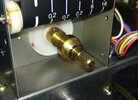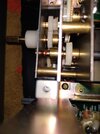Baronski
New Member
Hello, trying to get this new old radio up and running. Mostly just needs the old baked in 40 year old grease removed and replaced.
It's coming along nicely and I am moving cautiously to avoid mistakes.
Can anyone help correctly identify this control? I call it a precision tuning shaft, but can't seem to find any info searching the net.
I have successfully repaired this one, but accidentally had it disassemble.
It's coming along nicely and I am moving cautiously to avoid mistakes.
Can anyone help correctly identify this control? I call it a precision tuning shaft, but can't seem to find any info searching the net.
I have successfully repaired this one, but accidentally had it disassemble.


